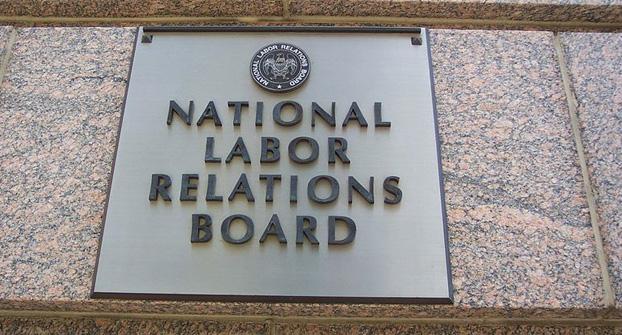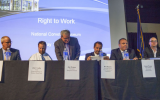Unionization 101

By: Olivia Grady
On Tuesday, August 23rd, the National Labor Relations Board (NLRB) issued a ruling that will likely change the relationship between graduate and undergraduate students and private universities dramatically. The NLRB consists of three Democrats and one Republican, Philip Miscimarra; all voted along party lines.
In its ruling, the NLRB declared that students who are teaching and research assistants at private universities are employees of the university and therefore, have the right to unionize:
The Board has the statutory authority to treat student assistants as statutory employees, where they perform work, at the direction of the university, for which they are compensated. Statutory coverage is permitted by virtue of an employment relationship; it is not foreclosed by the existence of some other, additional relationship that the Act does not reach.
The ruling addresses a 2014 petition filed by Columbia University graduate students who wish to join the United Auto Workers (UAW) despite the fact that Columbia already has raised the salary for its students who teach and provided more benefits without a union.
As one Columbia Ph.D. history student, Paul Katz, explains his support of unionization:
What we’re fundamentally concerned about isn’t really money. It’s a question of power and democracy in a space in the academy that’s increasingly corporatized, hierarchical. That’s what we’re most concerned about.
In response, representatives from Columbia University and other universities (including all of the Ivy League) expressed concern. They worry that bargaining with the union will affect their ability to choose, for example, who teaches classes and how many hours student assistants work. Unionizing these students would also raise salary costs and might lead to student strikes.
Joseph Ambash represents Brown University, Cornell University, Dartmouth College, Harvard University, Massachusetts Institute of Technology, University of Pennsylvania, Princeton University, Stanford University and Yale University. He wrote a brief for the NLRB, explaining the concerns of these universities’ Presidents. In a comment about this case to the Washington Post, Ambash said:
If a union is allowed to bargain about what teaching and research assistants do, that would in effect be interfering with the educational requirement of many of these schools. That would have a dramatic impact on higher education.
The NLRB, however, rejected the concerns of the universities, citing research that showed that the unionization of students at public universities previously had either no effect or improved the academic environment.
Interestingly, a debate over whether student research assistants are employees has actually been happening since at least the 1970s. The latest decision in 2014 was when the NLRB decided that Brown University graduate student assistants were students, not employees. However, the NLRB had switched back and forth over this question for many years. Yesterday’s decision overturned this previous ruling:
The Brown University Board’s decision, in turn, deprived an entire category of workers of the protections of the Act, without a convincing justification in either the statutory language or the policies of the Act.
The Board came to its conclusions by first looking at the definition of employee in the National Labor Relations Act (NLRA): “[t]he term ‘employee’ shall include any employee.” They next looked at the NLRA’s policy, which is to encourage collective bargaining. Because of the language of the Act and its policy, the Board decided that the students were employees unless there was some reason to forbid collective bargaining to students.
The Board gave several reasons for concluding that the law, evidence, and the Board’s experience did not support the Brown University ruling. For example, the law doesn’t say that employment has to be the primary relationship; there just has to be some compensation for work. In addition, the NLRB cited Dr. Judith Wagner DeCew, Professor at Clark University, who found:
[t]here appear to be no major disasters that have arisen because of [graduate-student] unions,” and examples of collective bargaining in practice “appear to demonstrate that economic and academic issues on campus can indeed be separated.
Further, some state universities have included language in their agreements with student assistants, which detail rights about class sizes, grading, etc, to alleviate the concern that collective bargaining of students will disrupt the students’ education. Employers and employees with union representation have also successfully bargained over these same issues for many years. Finally, the current situation is not working because students are trying to unionize.
The Board also rejected the dissent’s argument that the short-term employment of student assistants and procedural delays make this arrangement unsuitable for collective bargaining because this would lead to large groups of people who are ineligible for union membership.
In applying the above holdings to this case, the Board first addressed whether the students were common-law employees:
Common-law employment, as noted above, generally requires that the employer have the right to control the employee’s work, and that the work be performed in exchange for compensation.
They found that they were because the students received stipends for teaching. If the student was fired, he/she no longer was given a stipend.
The next question for the Board was whether the petitioned-for unit was appropriate. Columbia argued that it wasn’t because the students had completed different levels of education and received different benefits. The Board rejected Columbia’s arguments because the students had a community of interest:
Here, the proposed unit consists of a readily identifiable grouping of employees: all student employees who provide instructional services and all research assistants at Columbia University’s campuses. We further find that the employees in the unit share a community of interest and agree with the Regional Director who, in concluding the unit was appropriate, found substantial similarities among the types of work of all the student assistants in the proposed unit.
They also rejected the argument that the temporary assistants should not be included in the bargaining unit.
However, because of his concern for the effects of unionizing these students, NLRB Republican member Philip Miscimarra dissented:
The question is whether Congress intended—and whether our statute can be reasonably interpreted—to make the NLRA govern the relationship between students and their universities merely because students may occupy a variety of academic positions in connection with their education. As noted above, for most students including student assistants, attending college is the most important investment they will ever make. I do not believe our statute contemplates that it should be governed by bargaining leverage, the potential resort to economic weapons, and the threat or infliction of economic injury by or against students, on the one hand, and colleges and universities, on the other.
Unfortunately, there will be consequences for this ruling. The Obama Administration won’t care though, because it has tried, based on NLRB rulings, to make it easier for unions to organize. The goal is more union members for President Obama’s labor campaign contributors. Other examples of this favoritism towards unions include the new joint employer rule, the new ambush election rule, among others. Clearly, the NLRB is trying to accomplish as much of their goal as possible before President Obama leaves office in January 2017.





